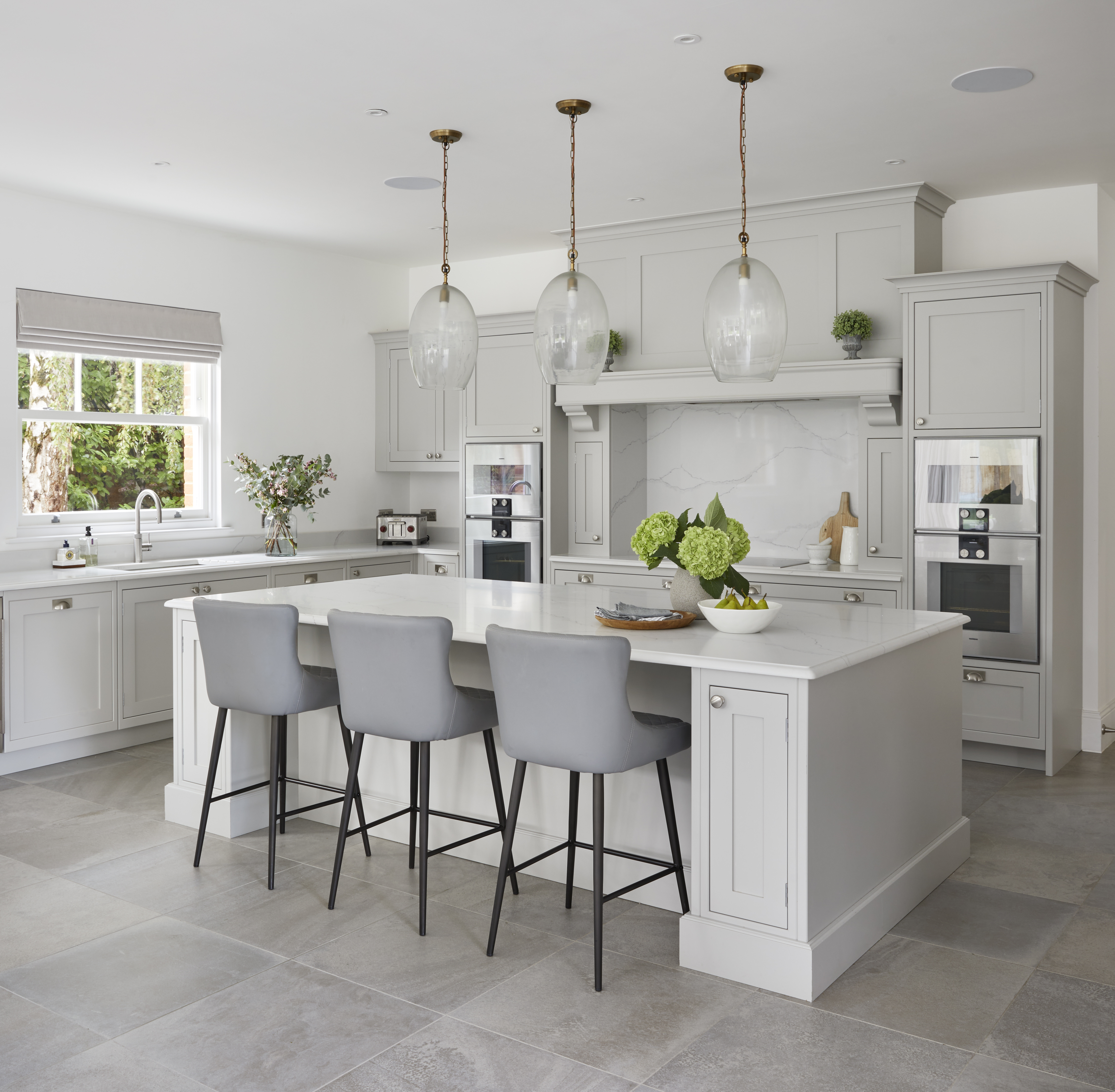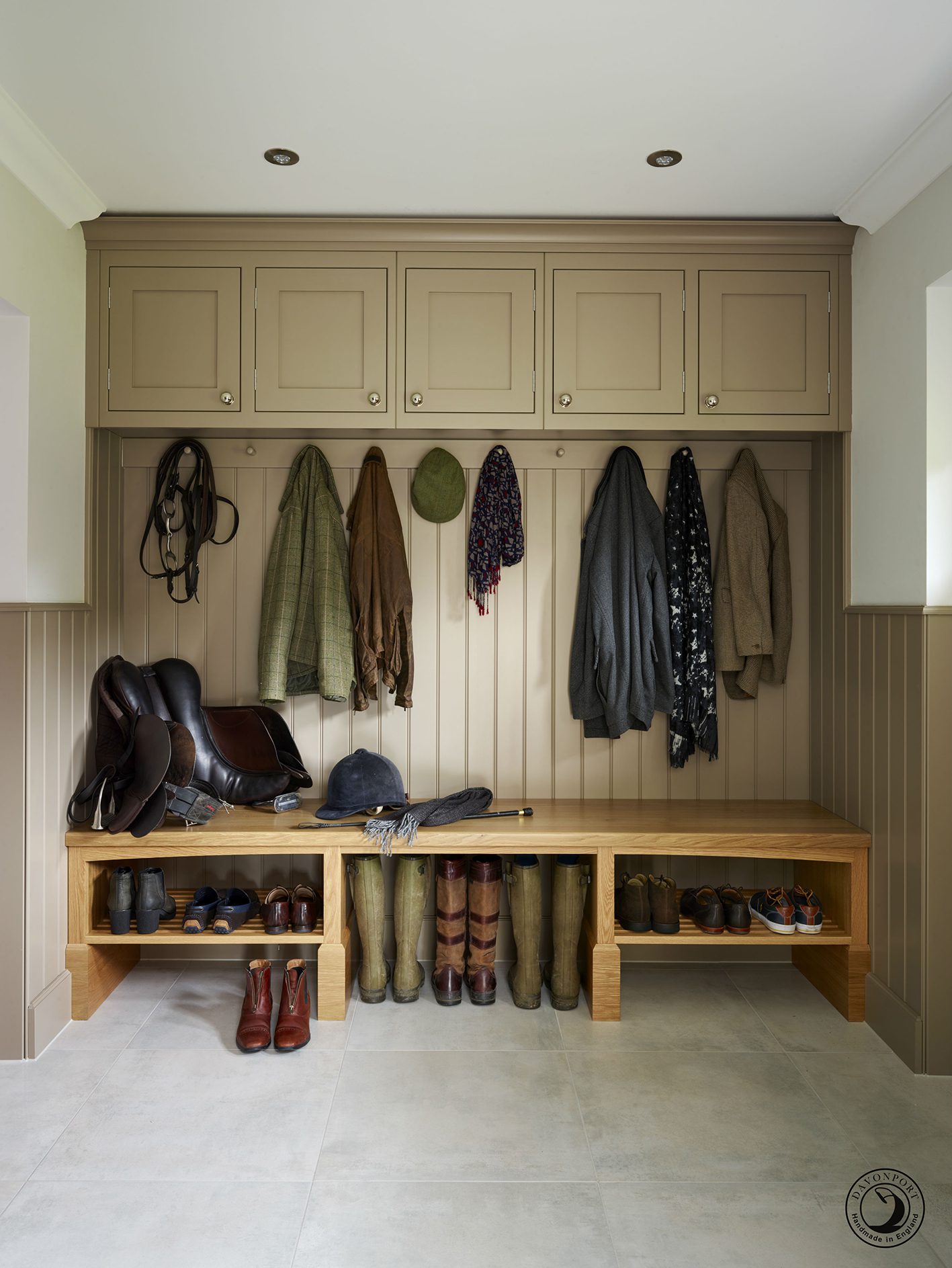Pink kitchens may not be for everyone, but it’s a colour choice that is proving…
Extraction: The Secret to a Clean Kitchen & Odour-Free Home
When designing a kitchen you tend to think of the cupboard style, colour palette and appliance wish list as the most important parts of the plan. These are, of course, crucial to your design, however, at what point would you think about extraction? Would it be an afterthought? The reality of the situation is that getting the right kitchen extractor fan is as important as choosing the right colour for your cabinetry. Your cupboards may not stay that colour if you don’t get the extraction right and the room may end up retaining the smell of dinners past which will be difficult to eradicate as greasy residues aren’t easily removed.
In addition, if your home is open-plan then the flow of smells from one area to another becomes increasingly easy. Whilst it’s one thing for a guest sat on the sofa to smell the delicious meal you are preparing for them, it’s something rather different when the smell of that food remains ingrained in the fabric for days on end. You can prevent this from happening by simply having adequate extraction fitted. Suitable extraction is also the key to keeping your kitchen clean as it will help draw the grease in the air out of the room.
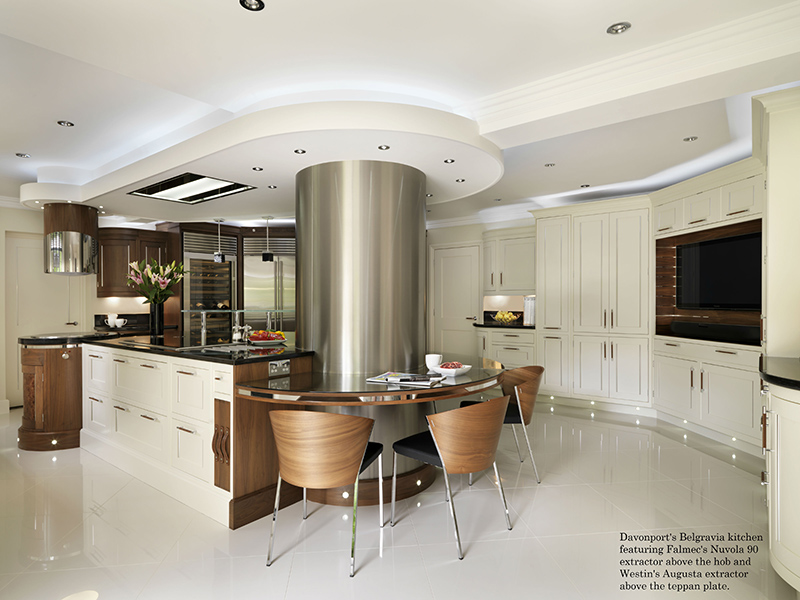
Installing an appropriate extractor fan is the best way to ensure your kitchen keeps its ‘brand new’ sparkle for as long as possible and the most effective way to keep your chandeliers sparkling. Without proper extraction at source, the odours and grease produced when cooking are not removed – as a result they settle throughout your kitchen, lingering on curtains and blinds and staining paint- and wood-work. As a result soft furnishings, worktops, light switches and any other surface areas build up a layer of grime which is very difficult to get rid of. Fitting adequate extraction when installing your new kitchen will help to keep it clean and grease free, helping maintain the glamorous and luxurious look that you always wanted.
Kitchen extractor fans work in one of two ways; extraction or recirculation. Extraction refers to when stale air is removed via ducting to an external outlet. In other words the air is removed from the building completely. This is the most effective form of extraction but is not always possible; for example if you live in an apartment or your kitchen is in the centre of your home it can be challenging creating a ducted route for the air to escape. In cases such as these recirculation is used. Recirculation is where the stale air is passed through a grease filter and then a charcoal filter to purify it, before releasing the air back into the room. This all happens within the hood, meaning no ducting is needed.
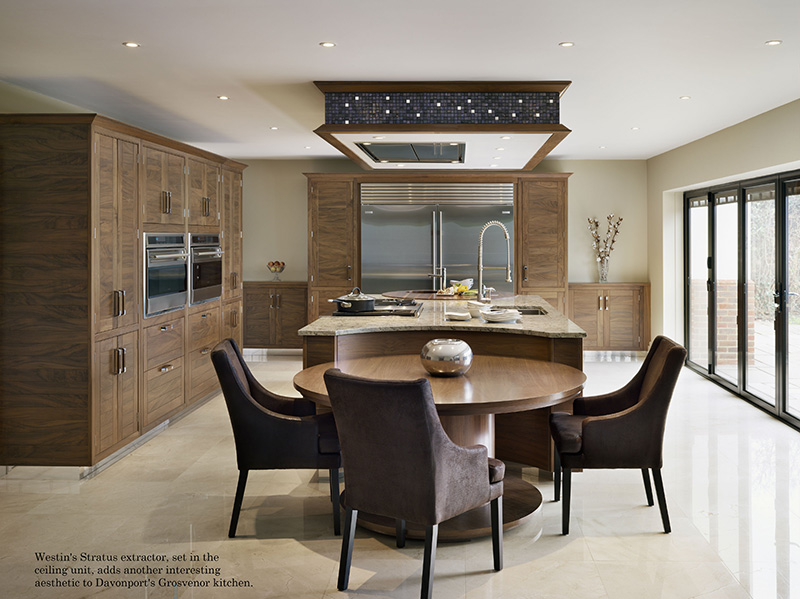
If you opt for a kitchen fan which uses the extraction method there are a few technical aspects to consider. The duct needs to be as short and straight as possible; ideally no longer than seven metres. Extraction also requires a source of fresh air coming back into the room to work best. A window or air brick will allow for fresh air to enter the room making extraction most effective.
Extractors are available in an array of shapes and sizes, and can be fitted in numerous different ways, including ceiling units, built-in over hob, work-surface downdraft and island hoods. Downdraft extractors are a relatively new type; these are hidden in the worktop itself adjacent to the hob, and at a touch of a button they rise out of the worktop ready for use whilst cooking. Then, after cooking they sink back into the worktop leaving behind a flush work surface.
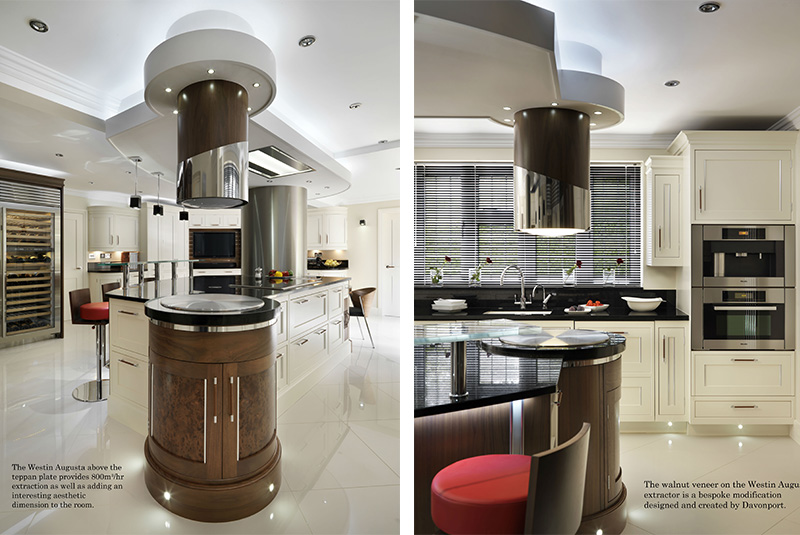
Island hoods, such as Westin’s ‘Orb’ are fully functional recirculation extractors but look like pendant lights, creating a beautiful feature as well as providing additional lighting. Our Belgravia kitchen features Westin’s ‘Augusta’ extractor above the teppan plate. The walnut veneer applied to the extractor is a bespoke feature designed and created by Davonport.
Alternatively, ceiling unit extractors are built flush into the ceiling of the room, disguising the extractor fan itself. Often a ceiling feature is created in order to not only house the extractor but also to form a design feature in itself. The extractor fan above the hob in the Belgravia kitchen is Falmec’s ‘Nuvola 90’. This is a great example of a ceiling unit extractor fan being integrated seamlessly into the design of the room. Westin’s ‘Stratus’ extractor, seen in our Grosvenor kitchen, is another example of extraction built into a ceiling feature. With internal motor power of 800m³/hr this extractor fan is within the new EU limits for electrical appliance efficiency. The previous maximum was 1000m³/hr so this reduction is now becoming an important factor to consider. The change in EU legislation is very recent and affects all extractors that use the extraction method (as opposed to recirculation).

With open-plan living on the rise appliance manufacturers are keen to reduce their sound levels. Having invited your friends round for dinner the last thing you want is to be shouting over the noise of your extractor fan. However thanks to modern technology, this has become a thing of the past; to put it in perspective, someone washing their hands under a tap registers at around 45dB. Miele’s ‘DA6690W’ extractor runs at 51dB. If you want noise to be at the absolute minimum some extractors can have a remote motor rather than an internal motor, which enables the noise of the cooker hood to be removed from the kitchen entirely. A larger pipe balanced with the size of the motor also helps to reduce noise levels. At Davonport we recommend using ducting of at least 150mm, ensuring that the extractor runs as quietly and efficiently as possible.
Whatever the design of your kitchen, extraction is crucial to make sure your kitchen keeps its ‘just finished’ shine and remains odour-free. Extraction is the key to maintaining a clean home with the glamorous sparkle you’ve been dreaming of, designed to enjoy for years to come.


